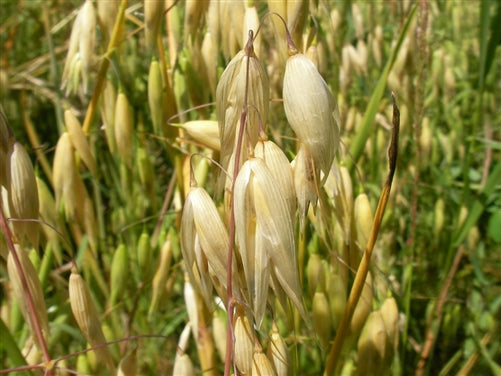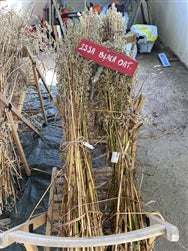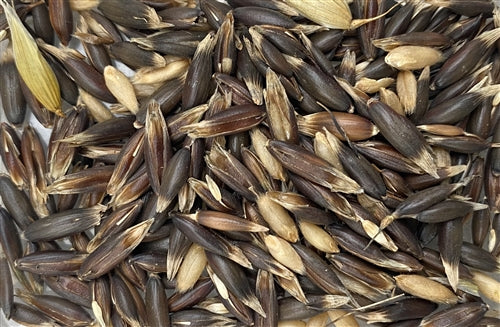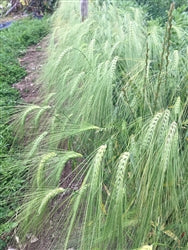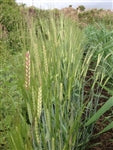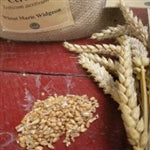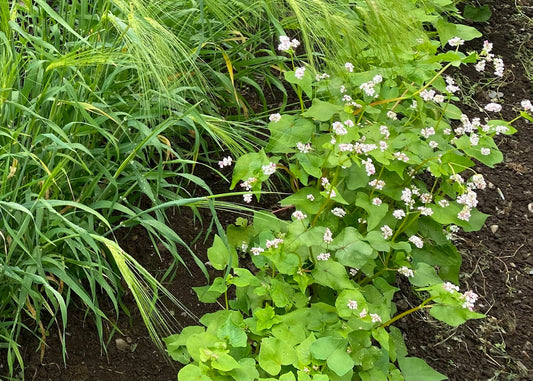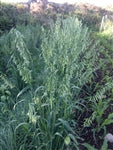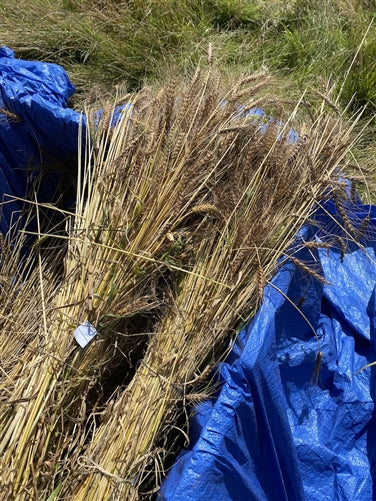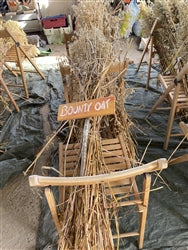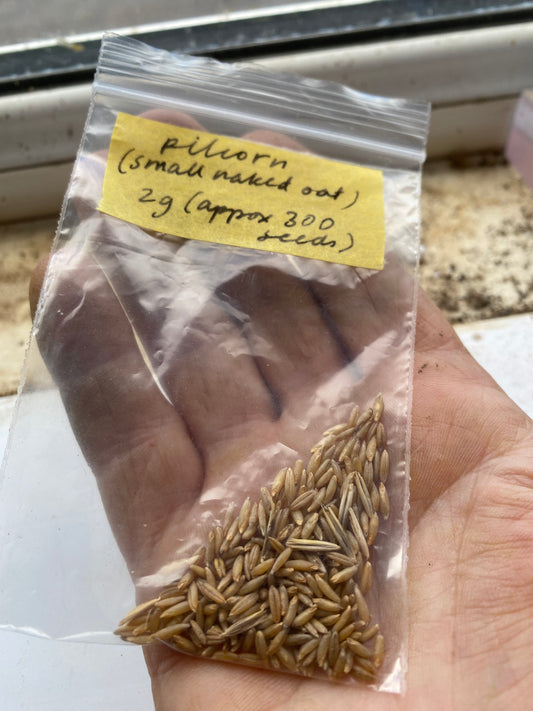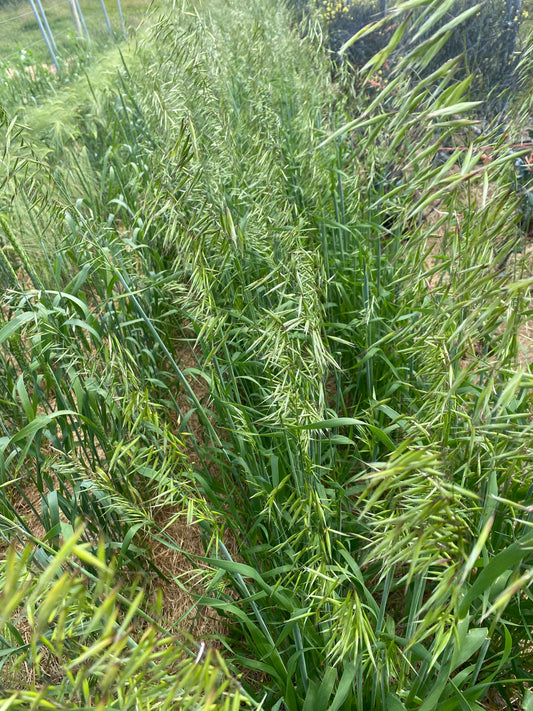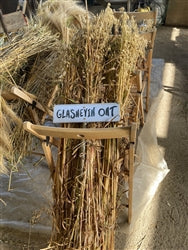Collection: Cereals and Oil Seeds
Cereals have been cultivated in the middle-east, where they originated, for over 10,000 years. They were domesticated from wild grasses that grew in the region, and whose seeds were harvested by early people. Wheat and barley reached Ireland with the megalithic farmers about 5000 years ago. Oats and rye evolved later, possibly from weeds growing i other cereal crops and became important in northern Europe as they are more tolerant of cool wet weather. Sow cereals for seed in September or October or in March or April, in rows 30cm apart. If they are being grown as a green manure they can be broadcast at a rate of about 25g/sqm.
If possible protect from birds after sowing, with a net. Keep well weeded by hoeing between the rows. Cereals can be used green for tea and grass, as well as mature and dried. For tea, harvest when the seeds exude a white milk when pressed under a nail. The main crop should be harvested when the plants have turned brown and the seeds are no longer milky, or when the birds start to eat them. The plants should then be harvested by cutting them at the base, bundling them into sheaves and drying under cover. They can be threshed by running through a garden shredder, although this damages the seeds a bit or by banging the plants on the edge of a bucket or barrel. They then need to be winnowed in a stff breeze to remove the debris. Oats need to be dehulled, steamed and rolled to make the familiar flaked oats used for porridge. Hulless oats may be simply soaked and boiled to make porridge or ground into flour. Wheat and rye can be ground into flour.
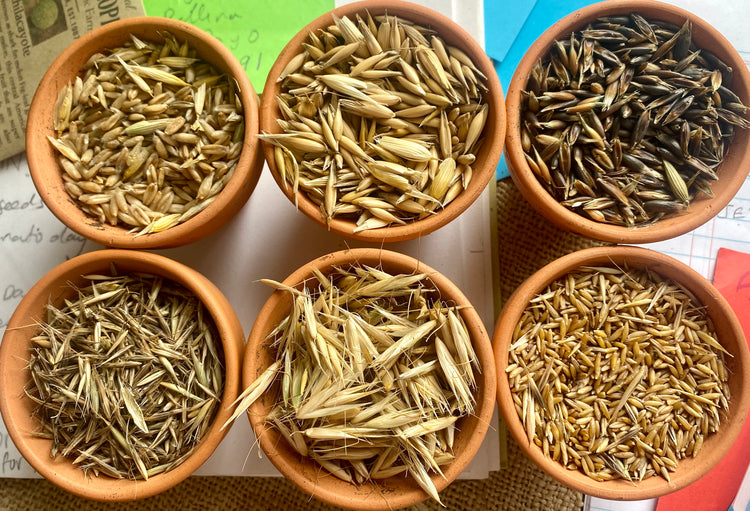
-
Black Seeded Sunflower
Regular price From €3,00Regular priceUnit price / per -
Hulless Oats
Regular price From €3,00Regular priceUnit price / per -
Irish Black Oats
Regular price €3,00Regular priceUnit price / per -
Bere barley
Regular price €3,00Regular priceUnit price / per -
Einkorn Wheat
Regular price €3,00Regular priceUnit price / per -
Olands Wheat
Regular price €3,00Regular priceUnit price / per -
Emmer Wheat
Regular price €3,00Regular priceUnit price / per -
Maris Widgeon Wheat
Regular price €3,00Regular priceUnit price / per -
Sonas Oats
Regular price From €3,00Regular priceUnit price / per -
Caffrey’s Oat
Regular price From €3,00Regular priceUnit price / per -
April Awned Wheat
Regular price €3,00Regular priceUnit price / per -
Bounty Oats
Regular price €3,00Regular priceUnit price / per -
Pillas/Pilcorn
Regular price From €3,00Regular priceUnit price / per -
Glasnevin Oats
Regular price €3,00Regular priceUnit price / per
Seed Categories
- Asparagus
- Aubergine
- Beans
- Beetroot, Chard and Spinach
- Broccoli, Cauliflower and Kohlrabi
- Burdock
- Cabbage, Kale and Sprouts
- Cape Gooseberry and Tomatillo
- Carrot
- Celery and Celeriac
- Cereals and Oil Seeds
- Oats
- Corn and Sweetcorn
- Courgettes, Gourds, Pumpkin and Squash
- Cucumber
- Fennel
- Herbs
- Leeks and Onions
- Lentils
- Lettuce
- Melons
- Onions
- Parsnip, Burdock and Scorzonera
- Peas
- Peppers and Chillies
- Quinoa and Amaranth
- Radishes
- Salad Leaves
- Salad Mixes
- Tomatoes
- Turnips and Swedes
- View All Categories

